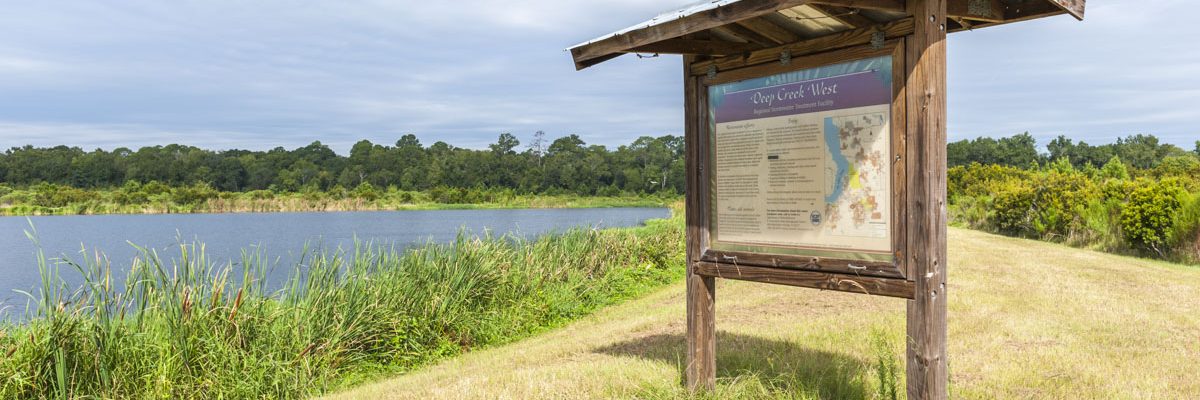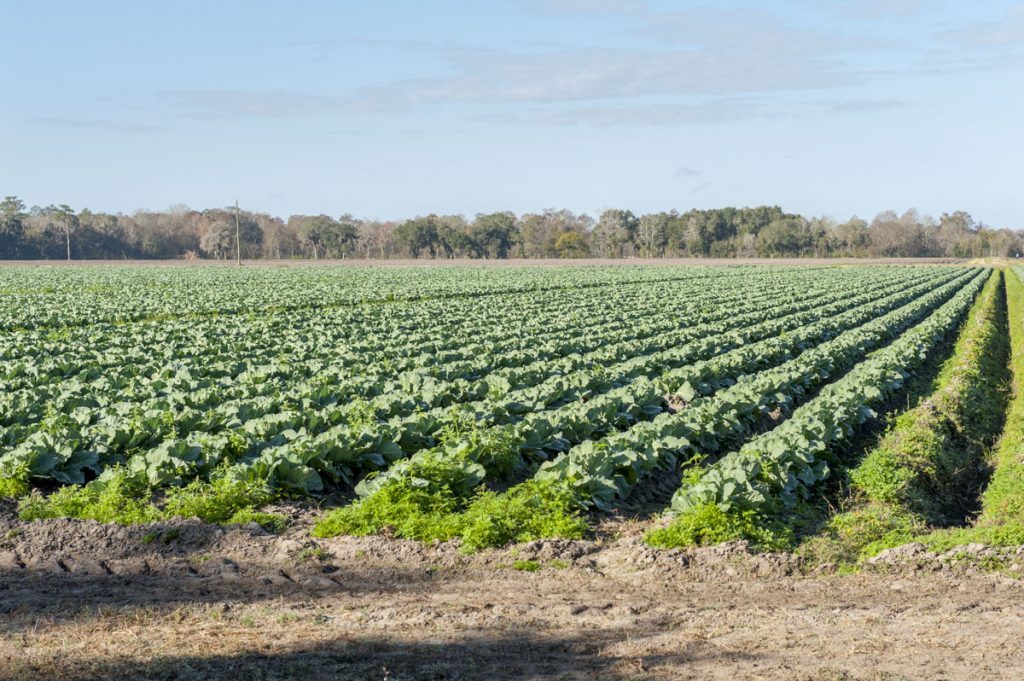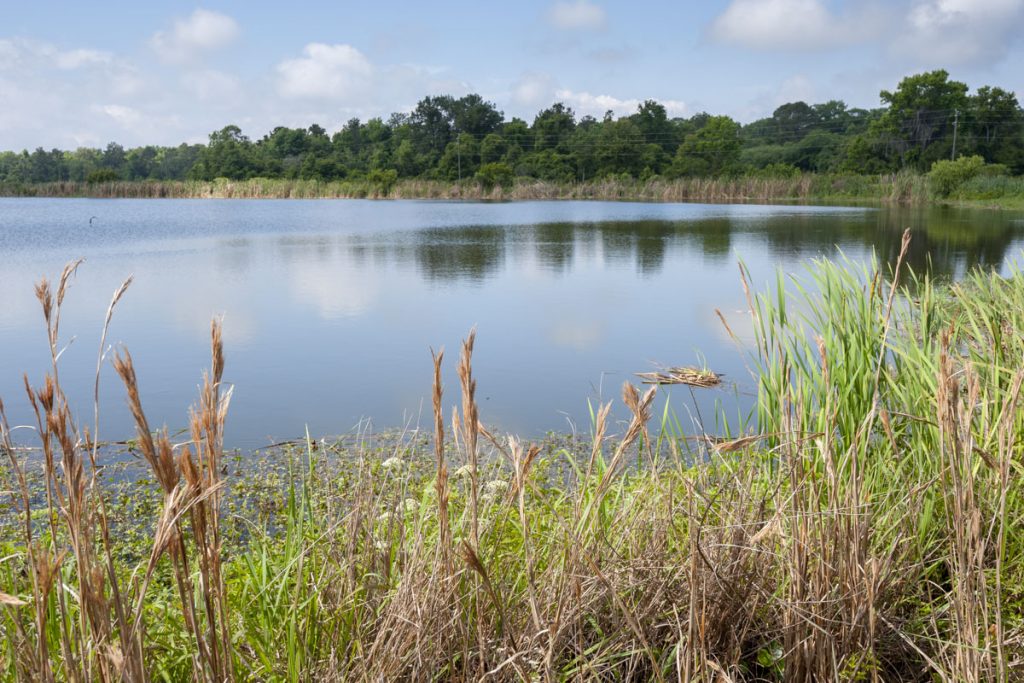For generations, the tri-county agricultural area (TCAA) — located in Flagler, Putnam and St. Johns counties — has been farmland, producing mostly potatoes and cabbage.
Runoff from the TCAA is nutrient-rich from fertilizers that are applied to the farms and make their way into the Lower St. Johns River Basin. This encourages algal blooms that deplete oxygen from the water and block sunlight from reaching underwater vegetation critical to fish and wildlife habitats. It is estimated that human activities have increased nutrient levels in the lower basin by six-times their natural level.
To address excess nutrients entering waterways, the St. Johns River Water Management District designed and built two regional stormwater treatment areas to reduce the amount of phosphorus, nitrogen and suspended solids flowing into the river.
The Deep Creek West Regional Stormwater Treatment Area has been operational since February 2006. The facility consists of a 15-acre wet detention pond and a 38-acre treatment wetland on 1,136 acres of the Deep Creek Conservation Area, located at the confluence of Deep Creek and Sixteen-Mile Creek in southern St. Johns County. To offset wetland losses from the widening of State Road 207, the Florida Department of Transportation (FDOT) partnered with the district to fund the $3.8 million project.
The second project, the Edgefield Regional Stormwater Treatment Area, consists of a 25-acre wet detention pond and a 56-acre treatment wetland and has been operational since October 2007. It is located on 212 acres of land adjacent to Dog Branch Creek in eastern Putnam County.
Funded with assistance from the National Oceanic and Atmospheric Administration’s Coastal Impact Assistance Program, FDOT and special legislative appropriations, the projects are very similar. The projects each cost approximately $3.8 million to complete ($1 million less than anticipated for each).
The projects reduce the total nutrients by 60 percent for phosphorus, 50 percent for nitrogen and 70 percent for total suspended solids in water routed through them.
In each project, irrigation and stormwater runoff from fields flow to the regional stormwater treatment area through canals and is pumped into the first component, a stormwater pond. Much like a neighborhood stormwater pond, these wet detention systems allow nutrients to settle to the bottom, where they are deposited.
Water then slowly flows into the projects’ second component, the created wetlands. Mimicking natural processes, the wetland vegetation further absorbs dissolved nutrients before the water empties into the St. Johns River.




